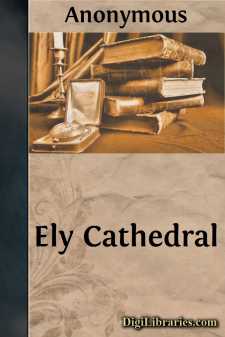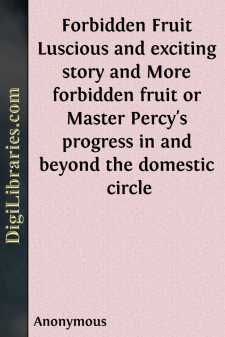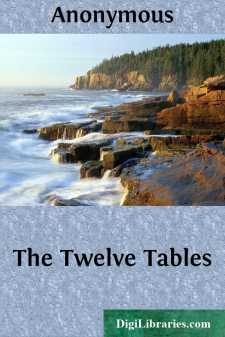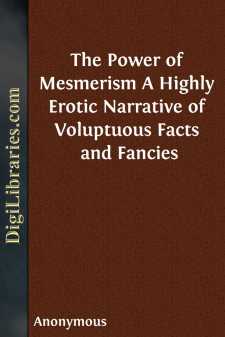Categories
- Antiques & Collectibles 13
- Architecture 36
- Art 48
- Bibles 22
- Biography & Autobiography 813
- Body, Mind & Spirit 142
- Business & Economics 28
- Children's Books 15
- Children's Fiction 12
- Computers 4
- Cooking 94
- Crafts & Hobbies 4
- Drama 346
- Education 46
- Family & Relationships 57
- Fiction 11828
- Games 19
- Gardening 17
- Health & Fitness 34
- History 1377
- House & Home 1
- Humor 147
- Juvenile Fiction 1873
- Juvenile Nonfiction 202
- Language Arts & Disciplines 88
- Law 16
- Literary Collections 686
- Literary Criticism 179
- Mathematics 13
- Medical 41
- Music 40
- Nature 179
- Non-Classifiable 1768
- Performing Arts 7
- Periodicals 1453
- Philosophy 64
- Photography 2
- Poetry 896
- Political Science 203
- Psychology 42
- Reference 154
- Religion 513
- Science 126
- Self-Help 84
- Social Science 81
- Sports & Recreation 34
- Study Aids 3
- Technology & Engineering 59
- Transportation 23
- Travel 463
- True Crime 29
Ely Cathedral
by: Anonymous
Categories:
Description:
Excerpt
THE MINSTER.
Copied, by permission, from "Good Words."
Stone upon stone!Each in its place,
For strength and for grace,
Rises stone upon stone!
Like a cluster of rods,
Bound with leaf-garlands tender,
The great massive pillars
Rise stately and slender;
Rise and bend and embrace
Until each owns a brother,
As down the long aisles
They stand linked to each other;
While a rod of each cluster
Rises higher and higher
Breaking up in the shadow,
Like clouds that aspire.
While here in the midst,
'Neath the great central tower,
The strength and the unity
Mingle in power,
And the mystery greatens:
Nowhere in the place
Can the eye see the whole,
Or the sun light the space.
And here the gloom gathers,
And deepens to dense,
While yonder the white light
Breaks sharp and intense.
Unity! Mystery!
Majesty! Grace!
Stone upon stone,
And each stone in its place.
HE introductory chapter of a book is often passed over without the careful perusal it very frequently deserves, when, perhaps, its purpose is to promote a better understanding of the subject contained in the main portion of the work. In the present instance our object is to give our readers an outline—a very brief one it is true—of the history and foundation of the monastery at Ely twelve centuries ago, which led to the subsequent erection of one of the noblest Cathedrals in the kingdom, in order to enable them to understand more fully some of the remarks in our description of this grand edifice as we now see it. To those who desire a more elaborate detail or fuller description than we can offer in our limited space, we would recommend a reference to The History and Antiquities of Ely Cathedral, by the Rev. James Bentham; or a more recent work, The Architectural History of Ely Cathedral, by the Rev. D.J. Stewart, M.A., formerly Minor Canon of Ely.
Christianity was first introduced into East Anglia about the end of the sixth century, by Redwald, the grandson of Uffa, founder of that kingdom; but it appears that little progress was made in his time, although Ethelbert, king of Kent, is said to have founded a monastery at Ely about a.d. 604. Eorpwald, and after him, Sigebert, sons of Redwald, greatly promoted the cause of Christianity, and it was during the reign of Sigebert that the truths of the Gospel spread over the kingdom; three monasteries were founded, one at Bury St. Edmunds, another at Burgh Castle, near Yarmouth, and a third at Soham; and the first Bishop of East Anglia was consecrated. The pagan king of Mercia frequently disturbed the tranquility of the kingdom, and Sigebert and his cousin Egric (to whom Sigebert had resigned his kingdom) were both slain in repelling an invasion. Anna met with the same fate; he was a prince greatly esteemed for his good qualities; he married Heriswitha, sister of St. Hilda, the foundress of Whitby Abbey, and had a numerous family, among whom may be named Sexburga, who was married to Ercombert, king of Kent; Withburga, who founded a nunnery at Dereham; and Æthelryth, or, as she is more commonly called, Etheldreda, the renowned foundress of the monastery at Ely, who was born about the year 630, at Exning, in Suffolk, a short distance from Newmarket.
Before commencing our sketch of the life of Etheldreda, we may by way of explanation say that what is now the Isle of Ely, was "anciently called Suth Girwa," and is a large tract of high ground en-compassed with fens that were formerly overflowed with water, of which Ely is the principal place, and gives name to the whole....












